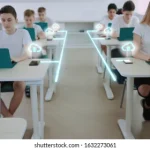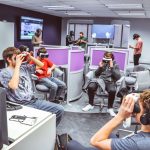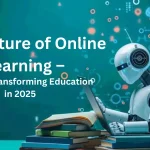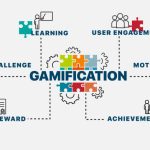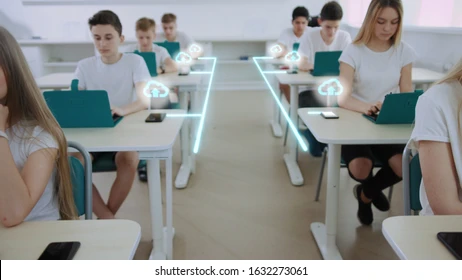
The classroom has always been the center of education, a place where knowledge is shared, curiosity is nurtured, and young minds are shaped for the future. Traditionally, classrooms were structured, teacher-centered environments, with blackboards, rows of desks, and a focus on textbooks. But as the world evolves, so do the needs of education. With technological innovation, global connectivity, and increasing awareness of emotional and social development, the future of classroom environments is expected to be far more dynamic, inclusive, and student-centered. This transformation will redefine how students learn, how teachers teach, and how education contributes to building a better world.
1. Technology-Driven Classrooms
One of the most significant drivers of change in future classrooms is technology. Already, we see the rise of smart boards, tablets, online learning platforms, and digital assessments. In the coming years, this trend will intensify.
- Artificial Intelligence (AI): AI will play a crucial role in personalizing education. Intelligent systems will assess each student’s learning patterns, strengths, and weaknesses, providing customized learning paths. For example, if a student struggles with algebra, AI-powered tutors could provide targeted exercises while adjusting the pace of learning.
- Virtual Reality (VR) and Augmented Reality (AR): VR and AR will make lessons more immersive. Imagine students learning about the solar system by virtually “walking” on Mars, or exploring ancient civilizations in history by entering a digital recreation of Rome. Such experiences will make learning more engaging and memorable.
- Gamification: Future classrooms will increasingly adopt game-based learning, where students earn points, badges, or rewards for completing tasks. This motivates learners and makes education feel less like an obligation and more like an adventure.
- Internet of Things (IoT): Smart sensors and connected devices will create interactive environments. For example, smart desks might display real-time information, or classrooms could automatically adjust lighting and temperature based on student comfort.
2. Flexible and Adaptive Classroom Designs
The traditional model of fixed desks and a teacher at the front is slowly becoming outdated. The future classroom environment will emphasize flexibility and collaboration.
- Modular Furniture: Desks and chairs will be lightweight and movable, allowing quick reconfiguration for group projects, discussions, or individual study.
- Learning Zones: Instead of one uniform layout, classrooms will have different zones—quiet corners for individual focus, open spaces for teamwork, and creative hubs for brainstorming.
- Open-Air and Outdoor Classrooms: As schools embrace holistic education, more lessons will take place outdoors, connecting students with nature and reducing stress.
This new design approach reflects the understanding that learning does not happen in a rigid format but flourishes in environments that adapt to diverse activities.
3. Sustainability and Eco-Friendly Classrooms
Another key aspect of future classrooms is the emphasis on sustainability. With global concerns about climate change and environmental degradation, education spaces will set an example for green practices.
- Eco-Friendly Infrastructure: Schools may adopt solar panels, energy-efficient lighting, and rainwater harvesting systems.
- Natural Elements: Plants, gardens, and natural lighting will be incorporated into classroom designs to create healthier learning environments. Studies show that contact with nature enhances focus and reduces anxiety.
- Curriculum Integration: Beyond physical changes, sustainability will also become a core part of what students learn, encouraging them to be environmentally conscious citizens.
Future classrooms will not only educate students academically but also instill values of responsibility toward the planet.
4. Global Connectivity and Virtual Classrooms
The COVID-19 pandemic accelerated the adoption of online learning, showing the world that education can continue beyond physical classrooms. While challenges remain, this shift opened the door to global connectivity.
- Hybrid Learning Models: Future classrooms will combine in-person teaching with digital platforms. Students might attend physical classes for practical activities while accessing lectures, resources, and assessments online.
- Global Classrooms: Students from different countries will collaborate on shared projects, breaking down cultural barriers and promoting cross-cultural understanding. For instance, a science project might involve students from Asia, Africa, and Europe working together virtually.
- Access to Global Experts: Through video conferencing and digital platforms, students will learn not only from their teachers but also from scientists, artists, entrepreneurs, and other experts worldwide.
This connectivity ensures that education is no longer limited by geography, giving every student access to world-class opportunities.
5. Emotional and Social Well-Being
Education is not only about academic achievement; it is also about shaping well-rounded individuals. The future classroom will place greater emphasis on mental health, emotional intelligence, and social skills.
- Mindfulness Practices: Dedicated spaces for relaxation, meditation, or quiet reflection will become common in classrooms.
- Social-Emotional Learning (SEL): Lessons will focus on empathy, teamwork, communication, and conflict resolution. Teachers will serve not only as knowledge providers but also as mentors and emotional guides.
- Counseling and Support Services: Future schools will integrate stronger mental health support systems, ensuring students can access counseling when needed.
By prioritizing emotional well-being, classrooms will create healthier, more supportive learning environments where every student feels valued.
6. Inclusivity and Accessibility
The classrooms of the future will be inclusive by design, ensuring that every student, regardless of ability, background, or identity, has equal access to education.
- Assistive Technologies: Speech-to-text software, screen readers, and AI-powered translation tools will support students with disabilities and those who speak different languages.
- Universal Design for Learning (UDL): Lessons will be structured in ways that allow multiple means of engagement, representation, and expression. This ensures diverse learning styles are accommodated.
- Cultural Representation: Textbooks and digital resources will highlight diverse cultures, perspectives, and histories, making education more inclusive and representative.
Such inclusivity will help create a classroom environment where diversity is celebrated and equity is a priority.
7. The Evolving Role of Teachers
In the future classroom, the teacher’s role will shift from being the sole source of knowledge to becoming a facilitator, guide, and mentor.
- Teachers will focus more on nurturing critical thinking, creativity, and problem-solving rather than rote memorization.
- With AI handling repetitive assessments, teachers will have more time to provide personalized guidance.
- Teachers will also require continuous training in digital literacy, emotional intelligence, and innovative teaching methods to thrive in future classrooms.
Far from being replaced, teachers will remain at the heart of education—using technology as a tool rather than a substitute.
8. Lifelong and Skill-Based Learning
The future of classrooms will extend beyond preparing students for exams. Instead, the focus will be on lifelong learning and equipping students with skills for real-world challenges.
- 21st-Century Skills: Collaboration, communication, creativity, and critical thinking will be prioritized.
- Career-Oriented Education: Classrooms will connect learning with practical applications, ensuring students graduate with employable skills.
- Continuous Learning Culture: Even after formal schooling, classrooms—both physical and virtual—will support adult learners and professionals seeking to upgrade their knowledge.
This shift will ensure that education is not just a phase of life but a continuous journey.
Conclusion
The classroom of the future will look vastly different from the one we know today. It will be technology-rich, flexible, sustainable, inclusive, and globally connected. It will balance academic learning with emotional and social growth, preparing students not just for exams but for life in a fast-changing world. Teachers will remain at the core of this transformation, empowered by technology but focused on nurturing human potential.
Ultimately, the future classroom environment will be a place where every student feels engaged, supported, and inspired—a space that prepares them to thrive in the 21st century and beyond.
Word Count: ~✅
